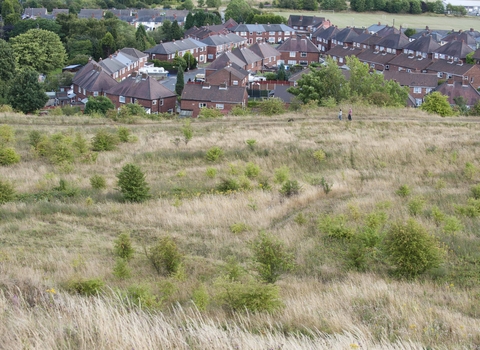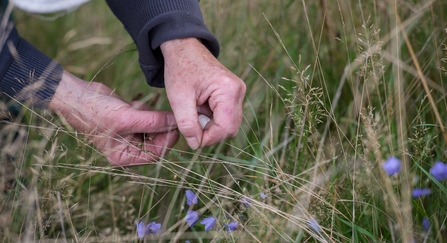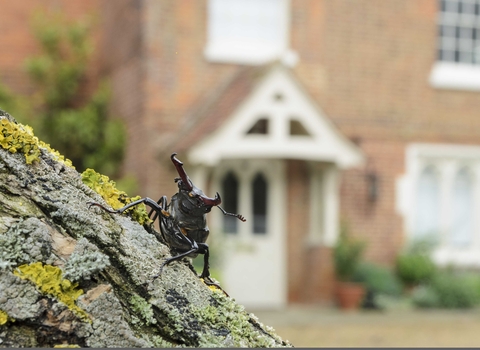What does Biodiversity Net Gain mean for developers?
The Environment Act 2021 makes Biodiversity Net Gain (BNG) a legal requirement for the majority of developments from January 2024, and for ‘small sites’1 from April 2024.
The Act lays out that a minimum of 10% net gain is required, although some Local Authorities may ask for higher than this. The 10% set out in legislation is mandatory and therefore there is no scope for the requirement to be reduced based on viability, land values or other issues.
Some Local Authorities have their own locally-specific BNG policies which specify the amount of net gain developers need to deliver and what strategies they require developers to take into account in delivering BNG, eg. Green Infrastructure strategies and Local Nature Recovery Strategies (LNRS). Some also include policies relating to BNG in their Local Plans.
When planning any development, developers should always follow the Mitigation Hierarchy, which is a set of prioritised steps designed to minimise harm to biodiversity. For more information on this, see our Useful Resources section below.

Paul Harris 2020 Vision
Need to buy BNG Units offsite?
We can help you locate BNG Units in the best places for nature recovery in Staffordshire.
Your responsibilities – developers and planning applicants
Before any development begins, a planning applicant will need to measure the existing biodiversity value of their site. This is measured in ‘Biodiversity Units’ (sometimes also called ‘BNG Units’). A Biodiversity Unit is essentially an area of habitat, and it is calculated using a metric developed by DEFRA that takes into account the size of the habitat, its quality and location.
After determining the current biodiversity value of the site, an applicant will need to calculate the number of Biodiversity Units they will need to create in order to result in a minimum 10% net gain in biodiversity after their development. These units can then be delivered within the development site or, if this is not possible, in a suitable location elsewhere.
So, for example, if the site prior to development taking place contains 40 Biodiversity Units, you will need to create a minimum of 44 Biodiversity Units in total – either within the development itself or on another site.
The number of Biodiversity Units on your site can be calculated by your ecologist, or Staffordshire Wildlife Trust can carry out this work. For a quote, contact us using the form below.
Next steps
Developers will need to create a Biodiversity Net Gain Plan to show how – and where - the net gain will be achieved, and this must be approved by the Local Authority before planning permission is granted.
Developers must maintain the habitat that has been created or enhanced as part of delivering Biodiversity Net Gain for at least 30 years.

WildNet - Matthew Roberts
Our Biodiversity Net Gain services for developers
Do you need help to deliver Biodiversity Net Gain in Staffordshire, either on your development site or on third party land?
Staffordshire Wildlife Trust has the expertise and experience to support developers in fulfilling their Biodiversity Net Gain requirements. We can assist you in locating suitable offsite locations for BNG, which maximise the benefits for nature. We can also offer advice and guidance on the BNG process, and can carry out management and monitoring of your BNG sites.
Hassle-free BNG
Thanks to our links with Local Authorities and landowners, Staffordshire Wildlife Trust can help get your BNG project moving quickly. We have a proven track record of delivering high quality habitat restoration and enhancement, and will ensure your BNG project aligns with Local Nature recovery Strategies to ensure the right habitat is being created in the right place.
We can guide you through the full BNG process, and offer the following services:
- Biodiversity Net Gain (BNG) pre-development site assessment
- Creation of Biodiversity Net Gain Plans (onsite and offsite)
- Support in locating a suitable site for creating BNG offsite
- Delivery of BNG habitat restoration
- Ongoing management of BNG habitat restoration
- Monitoring of BNG habitat restoration
Get in touch
Contact our team to discuss your Biodiversity Net Gain requirements.
1Small sites are defined as:
(i) For residential: where the number of dwellings to be provided is between one and nine inclusive on a site having an area of less than one hectare, or where the number of dwellings to be provided is not known, a site area of less than 0.5 hectares.
(ii) For non-residential: where the floor space to be created is less than 1,000 square metres OR where the site area is less than one hectare.
Useful Resources for Developers and Ecologists
The Chartered Institute of Ecology and Environmental Management (CIEEM): Biodiversity Net Gain: Good practice principles for development

